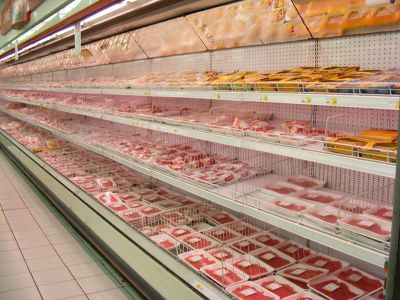The project
MEATPACK (A novel packaging system for meat safety and shelf-life extension) looked at several meat cuts, including raw pork loin muscle and cooked turkey. The researchers selected four pathogenic microorganisms, all common contaminants of the meats, and one food spoilage bacterium, of particular concern to extended shelf-life modified atmosphere packaged (MAP) meat products.
MEATPACK is building a prototype, a dielectric barrier discharge plasma unit that is effective and reliable in decontaminating food surfaces, operated within the meat processing and packing line. This can be used by an operator without specialist training and at a realistic cost for small to medium-size enterprises. During operation of the laboratory system, key parameters were optimised, including voltage level, inducer gas and post-treatment storage conditions. The ratios of the gases nitrogen, oxygen and carbon dioxide for the MAP meat packing and storage were determined.
Overall, plasma treatment showed a reduction of both challenge and background microflora. However, the efficiency of the inactivation decreased with increasing complexity of the media/food matrix. Background microflora studies suggested that plasma treatment could potentially extend the shelf-life of MAP meat products with regard to acceptable levels of microbial content.
Meat quality studies showed that surface colour of lamb meat was affected by plasma treatment at the beginning of the study, whereas visual appearance of pork loin and turkey slices were less affected by plasma.
The stand-alone, compact, batch mode, pre-competitive MEATPACK prototype could, if necessary, be incorporated into the production line. The machine will be able to handle a range of trays that are commonly used to pack the meat in the trial.
MEATPACK's system is unique and a review of commercially available technologies has confirmed this. Patenting will follow and the impact of each individual patent on MEATPACK will be determined. The focus of the project website is to inform both the public and industry of the basis of the technology.

